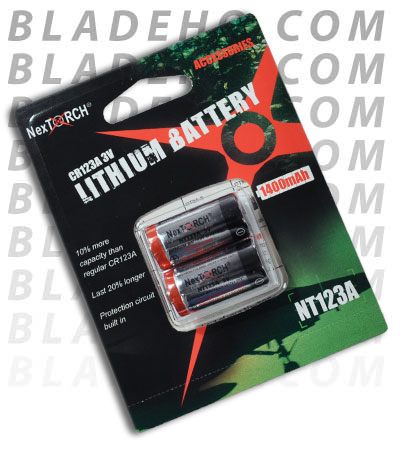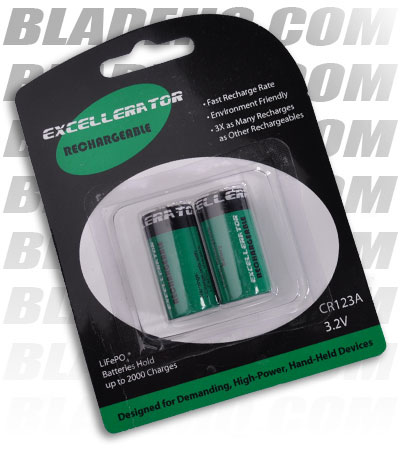The purpose of this post is to, hopefully, inform you on what kind of batteries are out there. When the time comes to buy more batteries for flashlights, there are lots to put into consideration.
I like to stick to the basics and like things done “old-school.” For batteries you basically have two different kinds: rechargeable vs. non-rechargeable. There are several things to put into consideration. First off, let’s get familiar with what a battery actually is. A battery is a portable electric storage unit by which cells carry an electric charge as a source of current.
Let’s keep it simple and take a look at non-rechargeable batteries. When making a choice on which battery suits your flashlight the best, it is always easier to stick to the basics such as a non-rechargeable battery. The three main brand of batteries you will see while battery shopping is Duracell, Energizer and Rayovac. All three are neck and neck for consumer batteries. The main difference between the three brands is price. Out of all three of those brands, I prefer to use Duracell—specifically Duracell Pro-Cell—with Energizer Max coming in a close second. If I am simply buying batteries for day-to-day use. The only way to go is Rayovac, simply due to how inexpensive they are.
Let’s take a look at some batteries that, in my opinion, exceed those three brands. My favorite non-rechargeable battery is the CR123A 3V NexTORCH Lithium Battery:

I was first introduced to these batteries working as an alarm technician. I quickly noticed that several alarms come with these batteries or people were upgrading to them. They feature a built in circuit protector. They have 10% more capacity than average CR123A and last 20% longer. They are a 3 volt battery with 1400mAH.
Now if you are anything like me, you are now asking yourself what does mAH mean? Well for batteries there are two different ratings on every battery: volts and amp-hours (AH). The AH rating may also be given in milliamp-hours (mAH). For example 1400mAH is equal to 14AH. The voltage of your battery should always remain the same.
Next, let’s look at rechargeable batteries. These batteries are no walk in the park. That being said, here are some things that you should know before purchasing. New rechargeable batteries come discharged and may take 3-4 charge/discharge cycles before the battery reaches its maximum capacity. If you decide to invest in rechargeable batteries, please keep in mind that they require to be discharged and recharged every 2-3 weeks. Why? They will slowly drain on their own and loose their capacitance or—in laymen terms—their ability to store a charge. It never hurts to keep you batteries clean. In fact, it is a very good idea to keep them cleaned to get the most life out of them. To clean a battery, it is best to use alcohol and a cotton swab to clean the contacts at the top and the bottom. The lifetime of the average rechargeable battery is 500-800 charge/discharge cycles. This usually translates into about three years for the average user.
Another term to become familiar with is “memory effect.” It is when you don’t fully charge or discharge the battery, it forgets how much it can really store and remembers less of its capacity. It won’t hold the charge specified on their label if it is not maintained properly. The memory effect is common with NiMH (nickel-metal hydride) batteries.
My favorite rechargeable battery is the Excellerator Rechargeable CR123A 3V:

These batteries are awesome and really inexpensive for what you are getting out of them. They have an extremely fast recharge rate of 85% of full power within 30 min. Also, you get three times the amount of cycles out of these. They have an average of 2000 charge/discharge cycles for these. They have an output of 3.2 volts.
The main difference between non-rechargeable and rechargeable batteries is what they are made out of. For instance NiCad batteries are always rechargeable and Lithium or alkeline are not rechargeable.
If you are looking for a battery that is going to turn your bulb into a beam, then I would suggest any battery that is nickel-zinc (NiZn) battery. These are often the brightest. However if your flashlight regulates voltage, these batteries won’t be any better than just an average battery. It is important to understand that the more volts you have the more likely you are to burn out your bulb at a faster rate.
When buying your batteries next time, put this into consideration:
If you are in a survival situation, how good is a rechargeable battery going to treat you? Are you going to be able to stop and plug them in to recharge? Or you can look at it the other way. Are going to want to haul around a stock-pile of batteries? Wouldn’t you rather haul around just a few and rely off of those to get more bang for your buck?………..The choice is yours.

We think your site is best we’ve ever seen. I’ll thank you a lot for sharing the very interesting stuff.